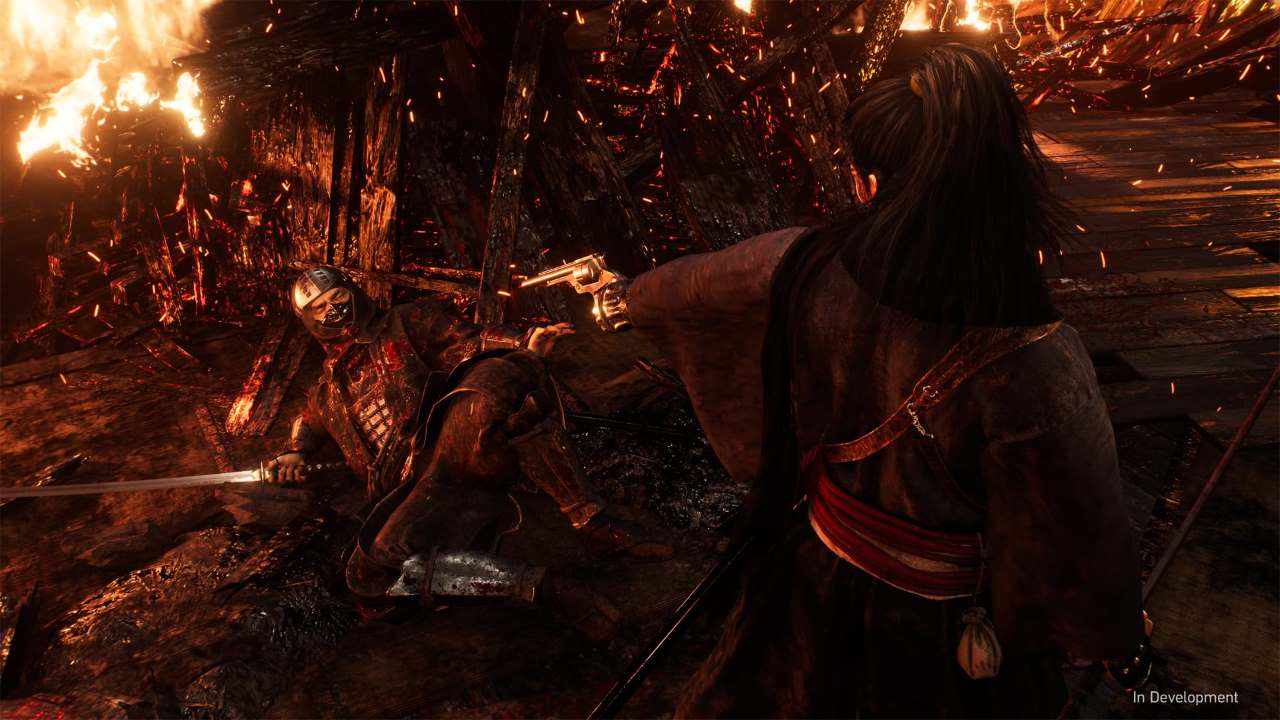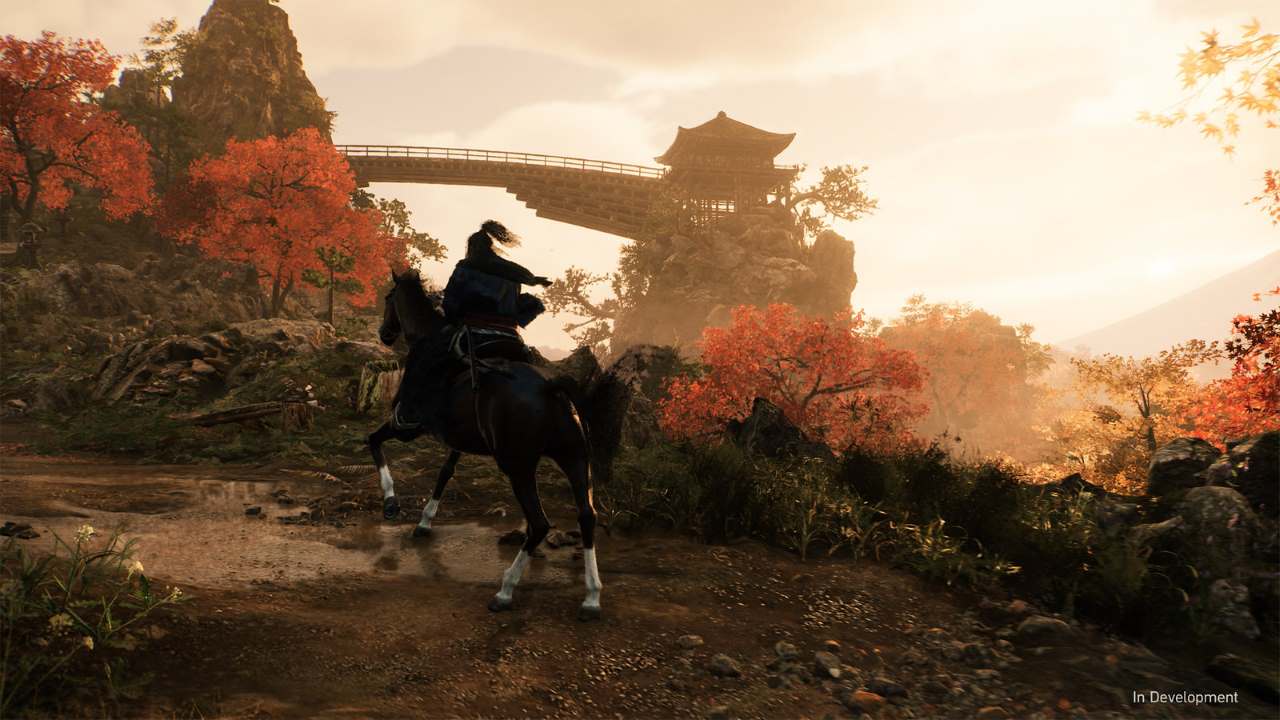Rise of the Ronin First Impressions | Samurai rollercoaster
A samurai game from the awesome folks at Team Ninja. 'Nuff said.

Rise of the Ronin is what happens when you take Ghost of Tsushima, Far Cry, Elden Ring, and throw in early 2000s media vibe in there. It’s over-the-top, fast, and thrilling in the same ways that it’s also slightly awkward in its core foundations. However, the undeniable energy that Team Ninja infuses in all of their games make a far more enjoyable experience, despite a few stumbles here and there. These are our Rise of the Ronin first impressions.
For initial previews, we were only allowed to talk up until a certain point very early on in the story. The embargo details say that it takes about 2 hours to reach this point. However, as soon as the game opened up its open world for exploration, I took my sweet time trying to see as much as I could before I progressed any further. At this point, I’m about 5-7 hours deep already before I even reached the preview embargo. I can honestly say that majority of it has been spent having fun while about 30% had me thinking about an earlier PS5 exclusive that also features a lone samurai in an open world.
Rise of the Ronin‘s story centers around a very pivotal part in Japan’s history. The West is already doing its best to establish a presence in the country which causes a lot of internal conflicts within its people. A very loaded time period that opens itself up to very interesting themes. The structures in the lands are changing and the very way of life itself in the country is being put into question. In the midst of all of this, you are a wandering Samurai seeking to form strong bonds to fight back against whatever comes in your way. At least, that’s what I currently think is happening.
Within the first few hours, the game’s writing doesn’t really do its premise any justice. Some of the dialogue can be flat coupled with the not-so-great English voices. I definitely suggest using Japanese audio for this one, same as I suggested using Chinese audio for Wo Long. It’s just the more immersive way to experience these types of games.
The unavoidable tragedy this game faces is that Ghost of Tsushima exists, which stands as the definitive way to handle a game centered around a Samurai in Japan. From start to finish, that game’s narrative established internal and external stakes that are so well interwoven with each other. This acted as the main factor that drove the main quests and the extra content that surrounds it. Rise of the Ronin doesn’t share that strong of a foundation.
It does try its best to get you invested into what you have to do but it didn’t feel as gripping as it could’ve been. The characters I’ve encountered so far hasn’t been all that memorable and the story beats barely have enough time to mature before moving onto the next. Hopefully, this does improve later on in the game but as it stands, if you’re the type of person who heavily relies on plot to determine if you’re gonna keep playing, Rise of the Ronin might struggle keeping your attention. Story has never been the strength of Team Ninja’s games so while it sounds like I’m harping on it too much, it’s really not that big of a deal in the grand scheme of things.

It’s in the gameplay design where Team Ninja shines and oh boy do they do exactly that here. What happens when you take Ghost of Tsushima and infuse early 2000s action media energy in there? You get Rise of the Ronin. The combat is a more slowed downed version of what we saw in Wo Long: Fallen Dynasty. There are multiple weapon types to play with, all having their own special moves and skills that you can specialize in depending on the class you choose. The more you use a weapon, the more proficient you become with it.
Combat animations are flashy. They never get old, especially in the bloody executions you can do with a critical hit once you stagger the enemy by depleting their Ki. There is a stealth system that’s so far, felt extremely overpowered. Sneaking up to an enemy is painfully simple. Luckily, I’d rather follow the Samurai’s code and face the enemies head on. It’s the more challenging route, and definitely the one that looks and feels cooler to pull off.
Speaking of challenge, Rise of the Ronin does contain soulsborne elements. When you defeat enemies, you get Karma. Once you fill up a bar, you can cash it in at Veiled Edge Banners, which are the game’s version of bonfires, and turn them into skill points. If you are killed, the enemy will be marked as a vendetta target. If you’re able to kill them, you get your Karma back. There are 3 difficulties available. You can change this at every Banner. I chose to play on normal difficulty and while getting the timing of blocking, parrying, and dodging can be tricky at first, it’s in the boss encounters where it all starts to feel significant. Nevertheless, for those who are usually apprehensive to get into a souls-like game, Rise of the Ronin seems like a very approachable entry point.

There’s also a lot of talk about the game’s visuals, with some calling it a PS3 game. A narrative I strongly disagree with. While it doesn’t reach the euphoric heights of Ghost of Tsushima’s masterful use of color or the distinct aesthetic personalities of Nioh 2 and Wo Long: Fallen Dynasty, Rise of the Ronin isn’t that bad of a looker itself. While some of the textures can come off as flat at times and the level design is more functionable than revolutionary, there was no point where it felt like I was looking at an ugly game. It’s a step below previously mentioned games, but it’s nowhere near as bad as some people make it out to be.
However, technical performance does need a bit more polishing. I ran the game exclusively on Performance mode, but it felt more like the game ran at 45 fps instead of 60. The chugging of framerates would usually happen when I start sprinting in the open world. There’s also an excessive amount of pop in.
There is a lot to like in Rise of the Ronin. The core gameplay itself does contain so much of what makes Team Ninja titles so memorable to begin with. It’s in the early game narrative woes I have that makes me worried about the rest of the runtime. Luckily, it does do just enough to keep me wanting to see more of what it has to offer. You play as a Samurai that has a grappling hook to swing you around and a set of gliding wings to fly over Japan. That sentence alone should be enough to check this one out.


